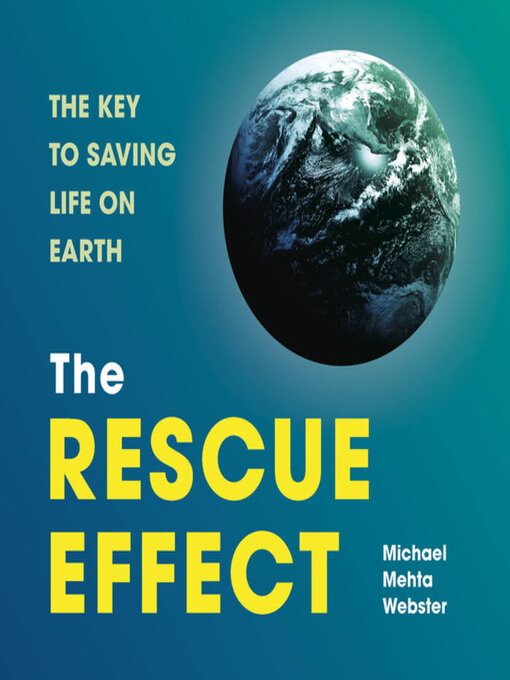As climate change continues to intensify, the outlook for life on Earth often seems bleak. Yet hope for the future can be found in the "rescue effect," which is nature's innate ability to help organisms persist during hard times. Like a thermostat starting the air conditioning when a room gets too warm, the rescue effect automatically kicks in when organisms are stressed or declining.
In The Rescue Effect, Michael Mehta Webster reveals the science behind nature's inherent resilience, through compelling stories of species that are adapting to the changing world—including tigers in the jungles of India, cichlid fish in the great lakes of Africa, and corals in the Caribbean. In some cases, like the mountain pygmy-possum in the snowy mountains of southeast Australia, we risk losing species without intensive help from people. As observers to—and the cause of—species declines, we must choose whether and how to help, while navigating challenging questions about emerging technologies and the ethics of conservation actions.
Ultimately, Webster argues that there are good reasons to expect a bright future, because everywhere we look, we can see evidence that nature can rescue many species from extinction; and when nature alone is not up to the task, we can help. Combining rigorous research with gripping storytelling, The Rescue Effect provides the cautious optimism we need to help save life on Earth.
-
Creators
-
Publisher
-
Release date
October 11, 2022 -
Formats
-
OverDrive Listen audiobook
- ISBN: 9781649041333
- File size: 209679 KB
- Duration: 07:16:49
-
-
Languages
- English
-
Reviews
-
Library Journal
September 1, 2022
Many species on Earth today are facing dire situations, but hope is not lost. Giving examples of how other species have survived or adapted throughout time, marine biologist Webster (natural resources and environment, Cornell Univ.) provides an optimistic view. Eight of the book's nine chapters focus on a particular creature or environment, such as tigers in India or Ascension Island. Both history and current events are included in explaining what happened to create the problems and what the future--both good and bad--could hold with or without human interference. After all, even if something is saved, something else is lost. Research, personal interviews, and up-to-date statistics support the text. Webster strikes a nice balance in his writing, including personal anecdotes, but not so many or so detailed that they distract from the subject. The chapters end with thoughts or questions for readers to consider. The author himself struggles with some of the ethical issues of conservationism, so he encourages readers to determine matters for themselves. VERDICT Socially conscious readers wanting to avoid doomsday environmental messaging will likely appreciate this one.--Elissa Cooper
Copyright 2022 Library Journal, LLC Used with permission.
-
Booklist
Starred review from August 1, 2022
In the face of climate change that is as demoralizing as it is alarming, Webster, a visiting professor at Cornell University's department of natural resources and the environment, offers an almost sanguine view of the future in considering a combination of six types of environmental rescue: demographic (new individuals emigrating to a struggling population), reproductive (a "baby boom" resulting from low competition), genetic (immigrants bringing new genetic diversity), phenotype (organisms adjusting themselves to changing conditions), geographic (relocation of a species), and evolutionary ("survival of the fittest" to persist under stressful conditions). Then he adds a seventh: "resurrectional rescue." He details case studies--Ascension Island, tiger reserves in India, Caribbean coral reefs, American chestnut trees--in which all of these rescues play out, some of them successful and others more challenging, like resurrecting the extinct cave bear and woolly mammoth. Webster pushes against the notion of ""nature as museum,"" arguing that nature itself has, over millennia, radically changed habitats, to which flora and fauna have often successfully adapted. Given the complexity of these processes, and the authoritativeness of the text, this is still well aimed at the general reader, the result being a near oxymoron: a realistic action plan built on hope.COPYRIGHT(2022) Booklist, ALL RIGHTS RESERVED.
-
Loading
Why is availability limited?
×Availability can change throughout the month based on the library's budget. You can still place a hold on the title, and your hold will be automatically filled as soon as the title is available again.
The Kindle Book format for this title is not supported on:
×Read-along ebook
×The OverDrive Read format of this ebook has professional narration that plays while you read in your browser. Learn more here.


